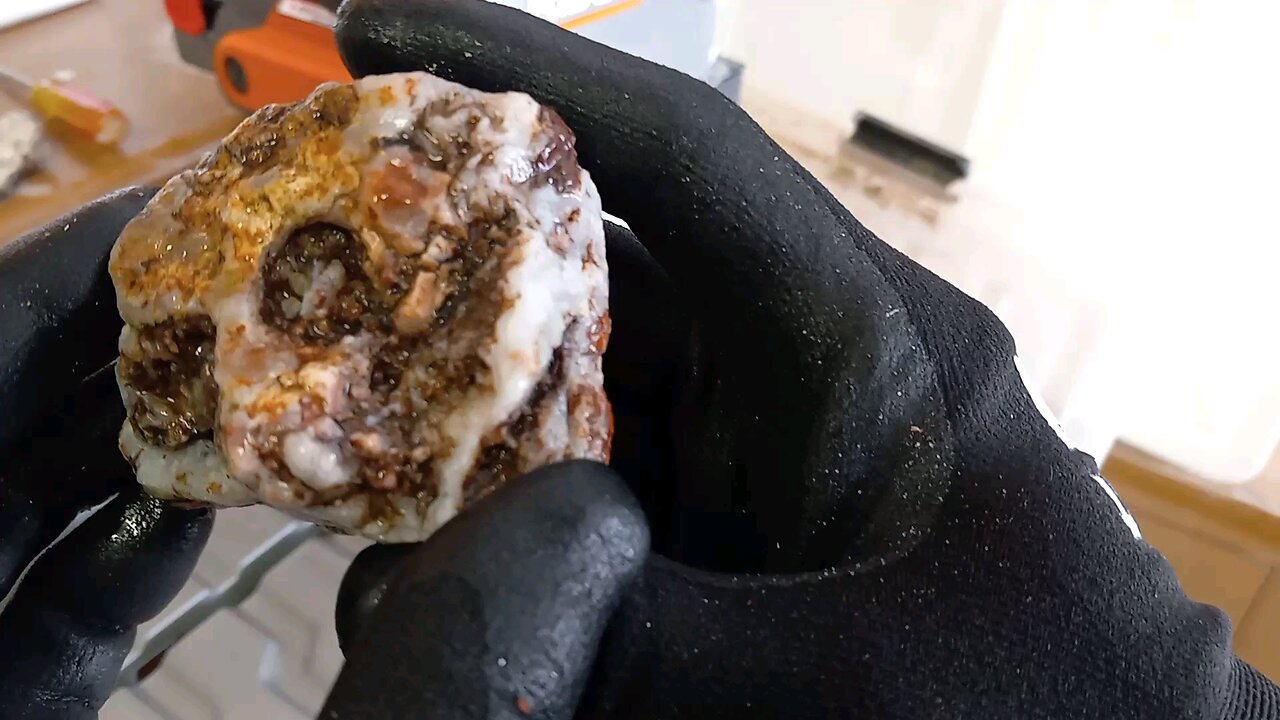Premium Only Content

More earthtones and opal inside!
Opal is a hydrated amorphous form of silica, with a water content typically between 3 and 21% by weight, most commonly around 6-10%. It's deposited at relatively low temperatures and can be found in the fissures of various rock types, including limonite, sandstone, rhyolite, marl, and basalt. Here's a deeper look into opal:
Types of Opal:
Precious Opal: Known for its "play-of-color," which is an optical phenomenon where colors flash or change as the angle of light or observation changes. This effect is due to the diffraction of light through the microscopic silica spheres within the opal.
Common Opal: Lacks the play-of-color and can come in a variety of colors like white, black, grey, yellow, orange, red, or brown. It's often referred to as "potch" when not gem-quality.
Fire Opal: Typically ranges in color from yellow to orange to red and can be transparent to translucent. Fire opals can exhibit play-of-color, but their name comes from the fiery body color.
Boulder Opal: A type of opal naturally attached to its host rock. It's often cut with the host rock to provide stability and to enhance the visual appeal.
Matrix Opal: The opal fills the cracks and cavities within the host rock, creating a network of opal that's visible on the surface.
Formation:
Primary Opal: Forms through the slow deposition of silica from groundwater in cavities or fractures of rocks.
Secondary Opal: Can form by weathering or alteration of other minerals, often in more superficial environments or through the action of silica-rich waters.
Locations:
Australia: The world's leading source, especially for precious opal, with significant deposits in places like Coober Pedy, Lightning Ridge, and White Cliffs.
Ethiopia: Known for its black opals and more recently discovered opal fields.
Mexico: Famous for fire opals.
Brazil: Produces a variety of opals, including crystal opal.
Properties:
Hardness: Typically ranges between 5.5 to 6.5 on the Mohs scale, though it can be softer if less hydrated or harder if more silica-rich.
Luster: Can range from waxy to resinous to vitreous.
Transparency: Varies from opaque to semi-translucent to transparent.
-
 0:52
0:52
RyanzRocks
2 days agoHeading home along the Columbia River!
28 -
 LIVE
LIVE
LumpyPotatoX2
4 hours agoSub-Sunday with Casual Verdansk - #RumbleGaming
183 watching -
 23:50
23:50
marcushouse
19 hours ago $6.31 earnedStarship Is About to Do Something It’s Never Done Before - A Huge First!
62.1K20 -
 2:35:00
2:35:00
DJC GAME STUDIOS
3 hours ago $0.16 earnedThe Sunday BrUnCh StReAm - LIVE Retro Gaming with DJC
3.8K -
 LIVE
LIVE
FrizzleMcDizzle
4 hours agoElden Ring Seamless COOP
123 watching -
 41:56
41:56
CatfishedOnline
2 days agoKinky Man Sends 401k to Romance Scammer from Ghana!
47.1K16 -
 1:53:55
1:53:55
Nick Shirley
22 hours ago $11.98 earnedIRL Confronting Anti-Trump & Anti-Elon Protesters
57.6K159 -
 16:18
16:18
Tactical Advisor
1 day agoRetiring My Patrol Rifle | Old vs New
46K3 -
 22:29
22:29
JasminLaine
23 hours agoAwkward Silence After Poilievre FACT CHECKS Reporter—Carney’s Face SAYS IT ALL
43.5K50 -
 9:48
9:48
VSOGunChannel
23 hours ago $2.91 earned25% of ATF Getting Fired? SUPER ATF on Hold?
39.4K34